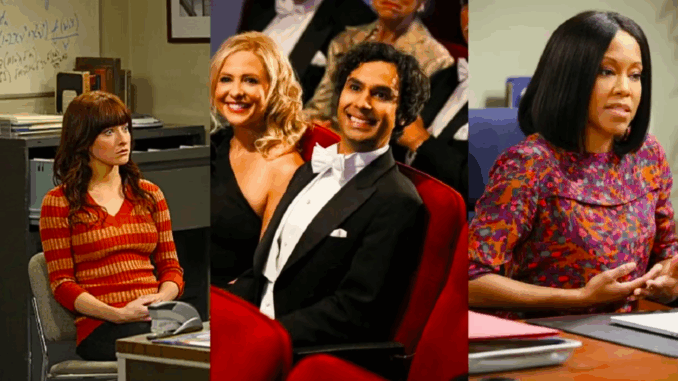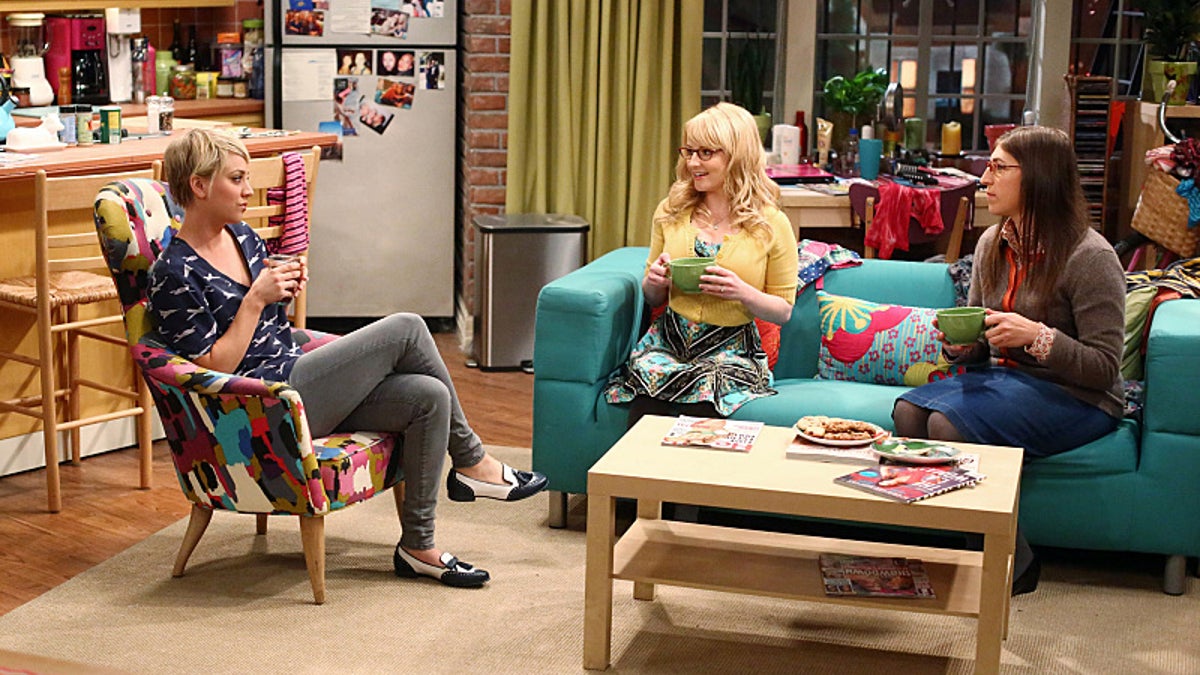
A Smart Sitcom with a Blind Spot
For over a decade, The Big Bang Theory dominated the sitcom landscape with its blend of nerd culture, science jokes, and endearing characters. It brought theoretical physics into living rooms and made comic book stores feel like home. However, for a show set largely at Caltech—a prestigious real-world research institution—there’s a glaring issue few fans openly discuss: the gender imbalance in the scientific cast.
While characters like Amy Farrah Fowler and Bernadette Rostenkowski-Wolowitz helped introduce intelligent, accomplished women to the mix in later seasons, the lack of consistent female representation in science throughout the early and middle years of the show left a gap that was never fully addressed.
Setting the Scene: Where Are the Women?
From Season 1 through Season 3, the show is centered around four male scientists—Sheldon, Leonard, Howard, and Raj—all working in various STEM fields. Despite being based in a real research environment, the presence of female scientists is nearly nonexistent. When they do appear, it’s usually in one-off guest roles or as romantic interests rather than professional equals.
Caltech, in real life, has been working toward diversifying STEM for decades. By the time The Big Bang Theory aired in 2007, there was already a growing conversation in academic circles about gender inclusivity in science. And yet, the show didn’t reflect this until much later.
Amy and Bernadette: A Much-Needed Shift
The introduction of Amy and Bernadette in Season 3 and 4 brought a refreshing dynamic to the group. Amy, a neurobiologist with a socially awkward but charming personality, and Bernadette, a microbiologist with a surprisingly assertive edge, broke the mold.
They weren’t just love interests—they had PhDs, careers, and personal goals. Amy regularly competed with Sheldon intellectually and emotionally. Bernadette held a high-powered job in a pharmaceutical company and was often the breadwinner in her marriage.
Their inclusion made the show richer, funnier, and more relatable to a broader audience. But it also begged the question: why weren’t there more women like them earlier?
What We Missed: Lost Opportunities for Representation

Imagine how different the show could have felt if we’d met a female astrophysicist working alongside Raj, or a string theorist who challenged Sheldon in the lab, not just in social settings. A female mentor figure at Caltech, a rival, a lab partner—these are roles that could have easily existed within the show’s structure.
The missed opportunity here isn’t just about gender—it’s about story depth. By diversifying the scientific workplace within the show, writers could have opened up rich plotlines involving workplace bias, mentorship, academic rivalries, and the double standards faced by women in STEM—all while maintaining the show’s comedic tone.
What the Show Got Right (Eventually)
Despite the late arrival of female scientists in the series, the show did an excellent job with the characters it finally introduced.
Amy wasn’t sexualized or “nerdified” in a stereotypical way. She was complicated—emotionally guarded yet open to growth, intellectually confident yet socially unsure. Bernadette balanced her sweet, high-pitched voice with sharp wit and ambition. Both characters pushed against sitcom stereotypes in subtle and meaningful ways.
Their friendships with Penny also brought new layers to the show. While Penny represented the “non-scientist” viewer in many ways, her dynamic with Amy and Bernadette highlighted how intelligence comes in many forms—and that emotional intelligence is just as valuable.
Beyond the Main Cast: Minor Characters Deserved More
One of the show’s minor recurring characters, Leslie Winkle (played by Sara Gilbert), had potential as a strong female scientist. As Leonard’s occasional romantic partner and Sheldon’s academic rival, she showed early signs of promise as a recurring force. However, she was written out after Season 3 with little explanation.
Other guest characters, such as Dr. Stephanie Barnett or Ramona Nowitzki, were used more as plot devices than fully developed personalities. Their scientific credentials were often overshadowed by their relationship to the male leads.
Had the writers invested more time into these characters, the show could have reflected a more balanced version of life at a major research institution.
Cultural Impact: Reflecting vs. Shaping Society
As one of the most-watched sitcoms of the 21st century, The Big Bang Theory carried cultural weight. Its portrayal of nerd culture helped redefine what it meant to be “cool” and intelligent. However, media doesn’t just reflect culture—it shapes it.
By not representing more women in science, especially during its early years, the show missed an opportunity to encourage a new generation of young women to see themselves as physicists, engineers, and researchers.
Conclusion: Progress, But Room for More
The Big Bang Theory remains a groundbreaking show in many ways, particularly for making science funny and accessible. But it also serves as a reminder of the gaps that still exist in how we represent gender in STEM on screen.
Amy and Bernadette proved that smart, complex, and hilarious women in science could carry storylines and win fans. Let’s hope future shows take that lesson to heart much earlier—and give women in science the screen time they deserve from the start.
